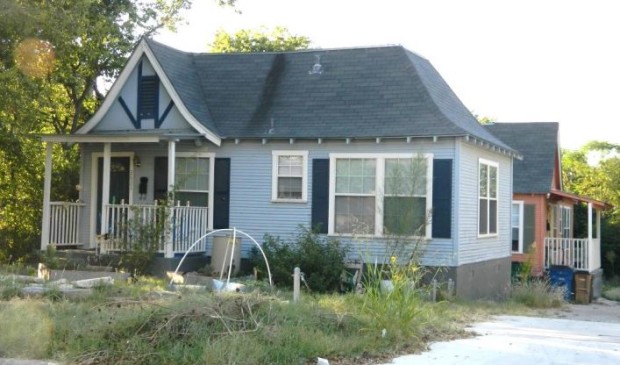Council seeks more historic preservation funds
Tuesday, June 12, 2018 by
Jo Clifton Several City Council members agree with their colleague Leslie Pool, who says the city’s Historic Preservation Office is “desperately understaffed” and badly in need of more funding in order to make sure that Austin can keep many of its historic structures.
Pool is sponsoring a resolution on this week’s agenda along with Mayor Pro Tem Kathie Tovo, Mayor Steve Adler, and Council members Ora Houston and Ann Kitchen, asking City Manager Spencer Cronk to consider creating a separate preservation planning division within the Planning and Zoning Department and to increase staff levels to match those of peer cities.
Currently, the city has just two historic preservation professionals working with two administrative employees.
Pool said she had been concerned about the Historic Preservation Office for quite some time. However, with an increase in demolitions of potentially historic structures – particularly in East Austin – she has become even more concerned. Pool is also concerned because of attempts during the 2017 legislative session to limit or eliminate Austin’s authority to designate structures as historic.
Tovo and Pool point to a letter from the historic landmark group Preservation Austin to Cronk when discussing the goals they hope the city manager will incorporate into next year’s budget planning.
On May 16, Ken Johnson, president of the board of Preservation Austin, wrote to the city manager asking him to establish the new division and add a historic district coordinator as well as an education coordinator to staff.
The organization also requested that Cronk employ a senior planner to review demolition and certificate of appropriateness applications. The group also urged the city to hire a planner to inspect construction projects involving historic structures.
Tovo said Monday, “For a caseload the size of Austin we don’t have a staff of comparable size. Steve Sadowsky is a very fine historic preservation officer, but” the staff is not sufficient for the number of cases it has to process.
Kate Singleton, executive director of Preservation Austin, is the former historic preservation officer for the city of Dallas and has also worked in historic preservation in Fort Worth. She told the Austin Monitor that she is concerned about inconsistencies in the way the Historic Landmark Commission makes decisions about recommendations on demolitions and historic preservation.
In most cities, Singleton said, commissions that make those decisions have legal counsel at every meeting to make sure that the commissions make consistent decisions that keep the city out of court.
Singleton also said it’s very important for members of the commission to get more training so they understand how to make decisions and what has to go into what she called “a defensible record.”
One of the inconsistencies that historic preservation advocates point to in criticizing Austin’s program relates to what are called the Calcasieu cottages, which were built by the Calcasieu lumber company in the 1920s and 1930s. Singleton said the houses were eventually relocated to a wedding venue outside of Austin. However, the commission insisted that four similar Calcasieu houses in Travis Heights remain in their apparently original location. Those houses have been updated, and Singleton said the 700- to 800-square-foot houses are perfect for affordable housing.
Singleton also said, “If the city really wants to be serious about historic preservation, like they talk about in Imagine Austin and other planning documents,” they need to fund more positions and they need to give the commission more training.
But that is not enough. Although historic preservation comes under the Land Development Code, that part of the code is not being rewritten as part of CodeNEXT, even though many believe it should be.
In its letter to Cronk, Preservation Austin recommended allocating $90,000-$125,000 to hire outside experts to rewrite the historic preservation sections of the code. An assistant city attorney is currently doing some cleanup but not a definitive rewrite, according to Pool.
Although Adler and his staff were involved in writing the resolution, his schedule did not allow for a conversation. However, he told the Monitor via email, “The Manager needs to tell us what more we can do to honor and promote the preservation of Austin’s historic assets and cultural and ethnic heritage.”
The resolution states that a 2016 survey of East Austin historic resources identified a number of potential historic landmarks and historic districts with significant architectural and cultural heritage. However, in part due to a lack of resources within the Historic Preservation Office, the city has received no completed applications for potential landmark designations or historic districts in that area.
The resolution’s sponsors want to make sure that there is more outreach and greater investment in places where people may not know that the city could help them in preserving their historic homes.
The resolution directs Cronk to return to Council with an analysis of the benefits, feasibility and estimated annual budget impact of the changes requested in the resolution by June 28, the last meeting before Council’s July vacation.
Photo courtesy of the city of Austin.
The Austin Monitor’s work is made possible by donations from the community. Though our reporting covers donors from time to time, we are careful to keep business and editorial efforts separate while maintaining transparency. A complete list of donors is available here, and our code of ethics is explained here.
You're a community leader
And we’re honored you look to us for serious, in-depth news. You know a strong community needs local and dedicated watchdog reporting. We’re here for you and that won’t change. Now will you take the powerful next step and support our nonprofit news organization?









